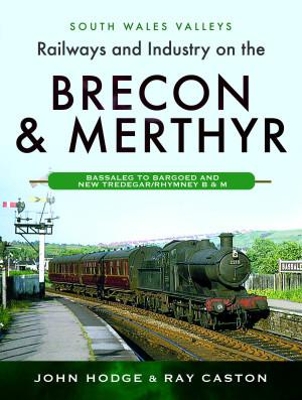South Wales Valleys
2 total works
Railways and Industry in the Tondu Valleys
by Hodge, John and Davies, Stuart V
Published 30 September 2019
The book begins with a history of the industrial development of the Tondu Valleys, including the succession of great industrialists who led the way in the area. This is followed by a chapter on the position of the Tondu Valleys in the South Wales Coalfield with colliery and colliery company details. Railway passenger services are next covered, followed by railway coal services. Then follows a detailed account of the sole railway depot which covered all the operations in the Tondu Valleys. A location specific account then follows of Llynfi Valley detailing both railway and colliery aspects, following the line from Bridgend, through Tondu, and all locations to Cymmer Afan and on to the original terminus at Abergwynfi, then from Blaengwynfi through the Rhondda Tunnel to Treherbert. The north end of the South Wales Mineral Railway became an adjunct to the Tondu Valley with the closure of the former Rhondda & Swansea Bay line and this is also included in similar detail. The closure of the passenger service in 1970 and renaissance of a new service from Maesteg to Cardiff in 1992 concludes the account. Detailed Appendices of operating statistics completes this very comprehensive account.
The book is the fullest account ever produced of this part of the South Wales scene and is a must for anyone interested in either the railway or mining activities (or both) in this part of South Wales.
A further volume covering the Ogmore & Garw Valleys (and associated lines) and the Porthcawl branch is planned.
The book is the fullest account ever produced of this part of the South Wales scene and is a must for anyone interested in either the railway or mining activities (or both) in this part of South Wales.
A further volume covering the Ogmore & Garw Valleys (and associated lines) and the Porthcawl branch is planned.
Railways and Industry on the Brecon & Merthyr
by Hodge, John and Caston, Ray
Published 27 April 2022
This book, as part of the South Wales Valleys series, deals with the former Brecon & Merthyr Railway line which ran from Bassaleg (north of Newport) to Brecon and Rhymney B&M, the latter line being closed north of New Tredegar in 1930 due to a landslide, one of several in that area. The most important and lucrative traffic was of course coal from the many collieries on the line, much bound for Newport Docks, though there was a regular passenger service both to Brecon and New Tredegar which ran to Rhymney B&M before 1930. At Machen the line diverted to Caerphilly and Pontypridd again with coal and passenger services, mostly covered by auto trains. Each location along all lines in the area is covered in detail with copious photographs to illustrate, and an OS Map from the start of the 20th C. to present a detailed coverage of the area around each location. The line is still open from Bassaleg to Machen Quarry for occasional trains of stone traffic using modern traction and wagons.

